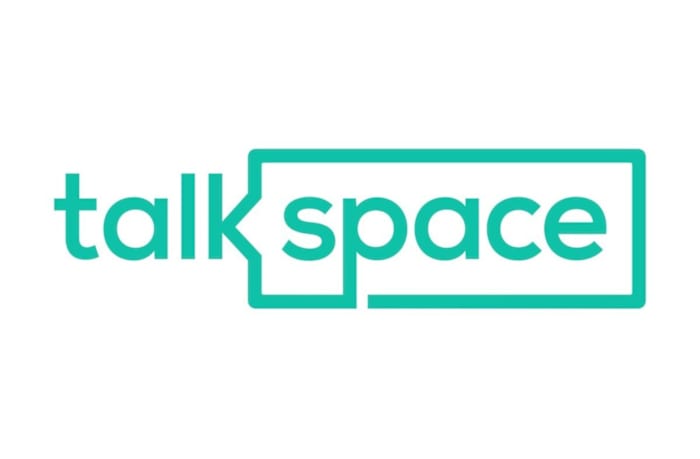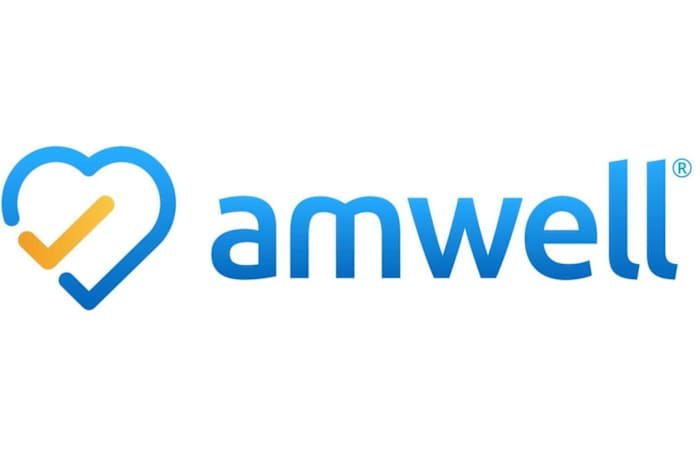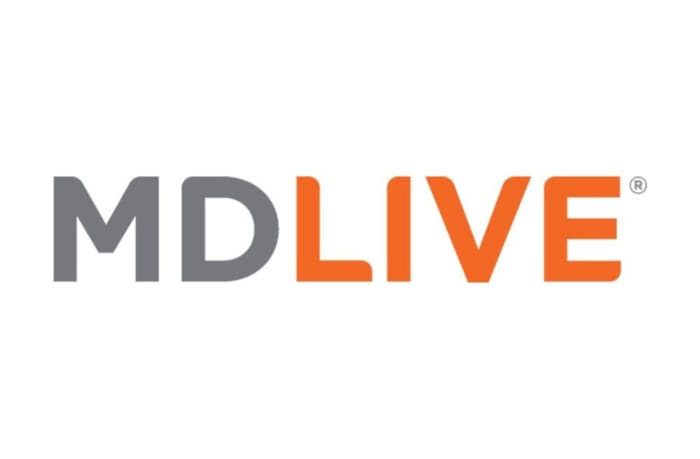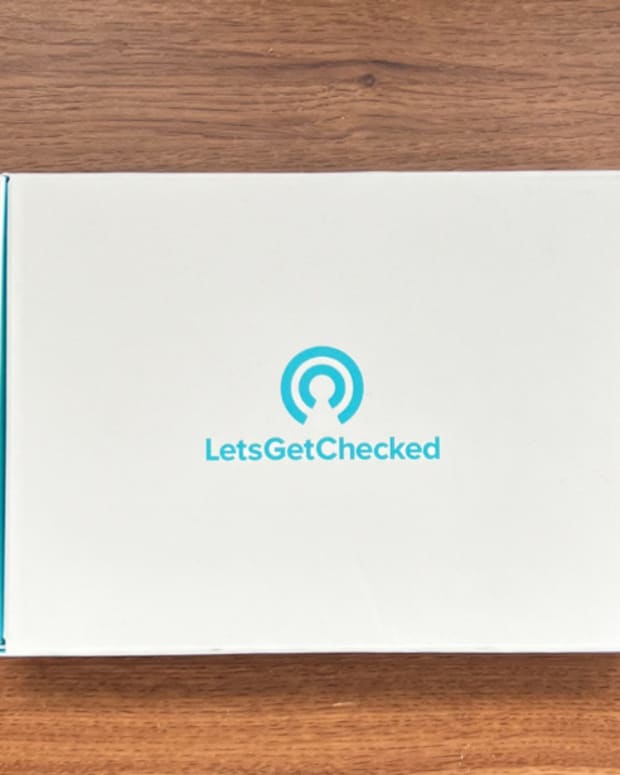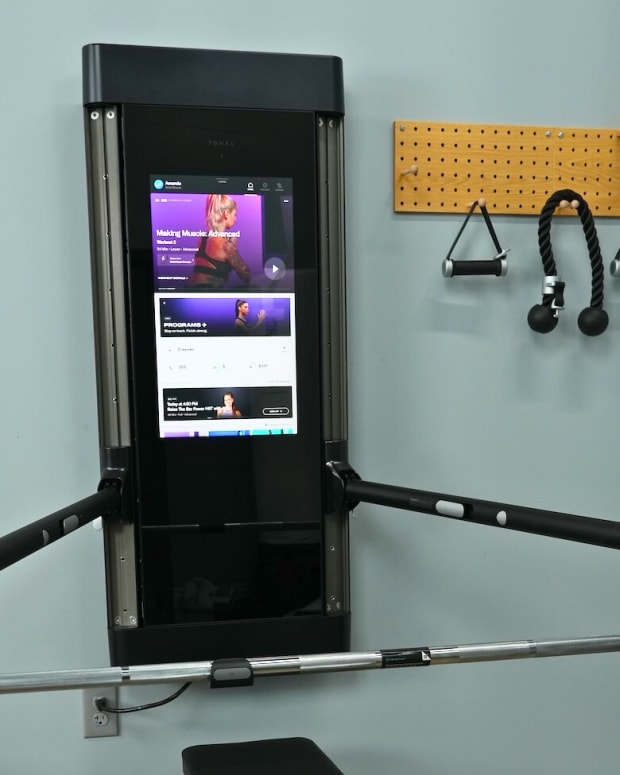The products featured in this article have been independently reviewed. When you buy something through the retail links on this page, we may earn commission at no cost to you, the reader. Sports Illustrated editorial staff are not involved in the creation of this content. Learn more here.
A supportive, empathetic and helpful therapist can be immensely important for maintaining good mental health. In years past, finding a therapist that has all three qualities has been an uphill battle. But now, partially thanks to the COVID-19 pandemic, online therapy services that take insurance are booming.
“If you ever tried to find a therapist pre-2020, you'd know it takes roughly the same amount of time and effort as it did for Indiana Jones to find the Holy Grail,” says Emily Hu, PhD, licensed clinical psychologist at Thrive Psychology Group in Los Angeles, California. “Virtual therapy platforms, on the other hand, vastly expand and facilitate therapy access.”
When you’re searching for teletherapy, there are several things to consider. First, the experts we spoke to emphasize that the service needs to have a HIPAA-compliant portal for safe, private sessions. What’s more, Hu recommends having multiple options to communicate with mental health professionals, like video, text messaging or chats, and phone calls. Insurance coverage is another crucial aspect. Many platforms accept some insurance providers, but not all, so check your eligibility while researching.
You’ll also want to find one that offers a matchmaking-style process to find a provider. “You should be able to sort your options by specialization, gender and sexuality, language, faith, race and more to find a therapist you’ll stick with,” says David Merrill, MD, PhD, geriatric psychiatrist and director of the Pacific Neuroscience Institute’s Brain Health Center in Santa Monica, California. But a good online therapy platform should also make it easy to switch therapists if you need to.
“When you’re looking for a therapist, you no longer have to consider how far the commute is, or timing around school, work or childcare,” says Hu. “All you need is a private place and a solid WiFi connection.” And that is a breath of fresh air amid a healthcare system that can feel, well, polluted.
Ahead, we’ve broken down four of the best online therapy options in 2024 if you’re looking to amp up your mental wellness or just want to continue your therapy journey from the comfort of your home. Each of these options take insurance and all of them enlist licensed therapists, social workers and psychiatrists. While many of these platforms have similar features, we’ve outlined ideal populations for each, from teens to couples to veterans.
Mental health apps are not a substitute for a licensed professional. If you’re in crisis or having suicidal thoughts, text or call the Suicide and Crisis Help Line at 988.
This content is meant to be informative, but should not be taken as medical advice. It is not intended for use as diagnosis, prevention or treatment of health problems. Always speak with a professional care provider before starting any new wellness regimen.
Our Picks for the Best Online Therapy That Takes Insurance in 2024:
Talkspace
Key features & specs
- Insurances accepted: Aetna, Cigna, Optum, Carelon Behavioral Health, Regence, Blue Cross Blue Shield, FSA/HSA accepted
- Therapy types: Video, text messaging, phone
- Best for: Teens, couples
- Cost without insurance: $69-109/week for therapy, $299 for initial evaluation with a psychiatrist, $175 for follow-ups with a psychiatrist
Talkspace is one of the top teletherapy platforms, endorsed by celebrities, athletes (hi, Michael Phelps) and more. The sign-up process is simple and intuitive, and instead of choosing a therapist, the algorithm matches your preferences with one after you fill out the initial questionnaire. If you don’t mesh with the one selected for you, you can switch them. The platform’s specialties are teen therapy and couples’ therapy.
The platform is often compared to its competitor, Betterhelp, which does not take insurance. Talkspace allows you to match with a psychiatrist for mental health medications, whereas Betterhelp does not. Talkspace and Betterhelp both offer group therapy-esque workshops. Talkspace’s are an additional $40 and hosted by licensed Talkspace providers covering topics like parenting, navigating relationships, gender identity and burnout. Betterhelp’s “groupinars” are a part of the platform’s monthly membership fee.
Talkspace accepts a handful of popular insurance plans, and it has a HIPAA-compliant portal, which users say is intuitive and reliable. You and your therapist can have video or phone sessions, and there’s a live chat available.
What we like:
- Easy sign-up process and clinician switching process, if necessary
- Available in all 50 states
- Therapists offer a high level of expertise and care
What to consider:
- Opaque privacy and billing policies
- Therapist matching process is not as personalized as other online therapy platforms
Brightside
Key features & specs
- Insurances accepted: Aetna, Cigna, Anthem, United, Allegiance, FSA/HSA accepted
- Therapy types: Video, text messaging
- Best for: People with severe depression or anxiety, those looking for shorter sessions, those wanting “homework” for in-between sessions
- Cost without insurance: $95/month (psychiatrist only), $299/month (therapist only), or $349/month (psychiatrist and therapist)
Brightside is a comprehensive therapy app where you can have live therapy sessions and do “homework” in between, similar to many CBT techniques offered by in-person therapists. After you sign up (for psychiatry, therapy or both) it goes based on a weekly subscription plan. You get one 30-minute video session per week, and throughout the week, you can use the app’s guided audio lessons and other exercises to work through depression and anxiety. Before each session, you complete a check-in, and you can look at your progress over time as you continue working with your clinician(s).
Related Post: The Best Mental Health Apps
You can choose to purchase more video sessions if you feel like you need more, as well. The platform also offers Crisis Care, which intends to support people with severe symptoms and/or an elevated risk of self-harm and suicide—a population often left out of teletherapy services. Staffed by Collaborative Assessment and Management of Suicidality (CAMS) clinicians, Brightside includes the same weekly sessions, check-ins and 24/7 messaging and call support, plus added safety plans and protocols. With this addition of Crisis Care, Brightside makes an excellent option for at-risk populations who don’t have access to quality crisis centers nearby.
What we like:
- You can combine therapy sessions with a “virtual CBT” program
- Crisis Care is available for those with an elevated suicide risk
- Easy to pick the right provider for you and switch if necessary
What to consider:
- Therapists only offer 30-minute sessions
- Not available to teens
Amwell
Key features & specs
- Insurances accepted: 100+ accepted plans, including Aetna, Anthem, Blue Cross Blue Shield and United
- Therapy types: Phone and video calls
- Best for: Children and teens, people with long hours or full-time jobs, pregnant and postpartum people
- Cost without insurance: $109/session to meet with a practitioner with a master’s degree, and $129/session to meet with someone who has a doctorate
Amwell allows you to choose a therapist yourself—and there are many to choose from. You have the option to pick between education levels, and you can opt for a psychiatrist too. It offers separate options for kids, teens and people going through menopause, pregnancy and postpartum. Instead of using a membership or subscription, you pay per session. The platform is covered by more than 100 insurance companies, making it one of the most accessible teletherapy options for those with coverage.
What we like:
- Providers offer weekend and evening sessions
- Intuitive, user-friendly platform
- Diverse selection of providers
What to consider:
- Video calls can be buggy, and there’s no option to restart a video call after it fails
- Potentially overwhelming amount of healthcare providers to choose from
MDLive
Key features & specs
- Insurances accepted: Cigna, Humana, Blue Cross Blue Shield, Aetna, some Medicare and Medicaid programs
- Therapy Types: Live messaging, phone, video chat
- Best for: Those who would prefer to use one telemedicine platform for all of their health needs
- Cost without insurance: $108/session after initial intake session
Anyone who wants to move their entire healthcare network to a virtual platform would be an ideal candidate for MDLive, which offers everything from therapy to dermatology, primary care and urgent care. As far as mental health services go, MDLive offers psychotherapy sessions for a flat fee ($108) with no confusing memberships, subscriptions or commitments. Most therapists will ask you to have sessions routinely, but it’s ultimately up to you. The platform gives you therapist suggestions and you can choose from their network.
It’s ideal for people seeking basic mental healthcare regarding depression, anxiety, grief, a traumatic event and more, but cannot help with ADHD, autism, extreme psychiatric crises and similar conditions. MDLive is great for short-term therapy thanks to its no-commitment model, so it’s an excellent resource if you experience a job loss, are grieving the loss of a family member or are going through a big life transition.
What we like:
- The platform offers more than mental health guidance (dermatology, primary care and urgent care)
- Flat rate pricing
- 24/7 live chat available
What to consider:
- Unclear whether your insurance will cover the services upfront
- Glitchy video and phone calls
Benefits of Online Therapy
“According to research, both virtual and in-person therapy have similar effectiveness,” says Amanda White, LPC, NCC, founder of Therapy for Women Center in Philadelphia, Pennsylvania and author of Not Drinking Tonight: A Guide to Creating a Sober Life You Love. In fact, a literature review of studies about online cognitive behavioral therapy (aka CBT or “talk therapy”) found encouraging data that showed it was more effective than face-to-face therapy for things like depression and anxiety. It also removes the hurdle of travel, which can sometimes be the difference between seeking out care and not. “It really improves the options in terms of access because there's not the barrier of transportation, whether it's gas prices or parking or traffic,” says Merrill. “It really improves access for patients across the board.”
Another benefit? Since these online therapy companies have such a wide variety of therapists, you’re more likely to find a provider you can relate to. “If you're someone with diverse identities, say, a person of color, using virtual therapy makes it so much easier for you to connect with therapists with similar backgrounds who might be easier to feel comfortable with,” Hu says.
Having a therapy session in your own space can make tough, vulnerable conversations a little bit easier—especially if you’re able to snuggle up with a blanket or a mug of hot tea. “If you've just finished an intense and emotionally draining session, instead of then having to get into your car and brave rush hour traffic to get home and decompress, you can just find a quiet space to do some meditation, make yourself something comforting to eat or stretch out for some yoga right at home,” Hu tells SI.
Related Post: The Best Health Apps
Are Online Therapists Worth It?
Like in-person therapy, online therapists are worth it—if you put in the time and effort. Online therapy can be more of a challenge given the inherent increase in distractions when you’re in your own space (like laundry, doorbells and pets). Still, if you and your virtual therapist are dedicated to your treatment plan, our experts say you can absolutely reap positive benefits.
Online therapy providers like the ones we’ve outlined below also typically include more “frills” than traditional in-office psychotherapy, including everything from daily check-ins to 24/7 messaging and more, which can potentially give you more bang for your buck. Some platforms even have the option to tack on a psychiatrist’s help in addition to talk therapy so you can manage mental health medication online, too.
If you don’t think you’ll be able to focus or you don’t have the privacy at home that makes online therapy really worth it, stick to in-person therapy or a hybrid model before you commit to virtual.
Who Should Use Online Therapy?
Anyone who uses being busy as an excuse to skip out on mental healthcare is an ideal candidate for telehealth services, because with these platforms you can choose your own therapist and session types and times. Moreover, people with mobility issues, people who are immunocompromised or people who don’t have access to convenient transportation can make great use of it.
Especially now, people who live somewhere where it's difficult (or sometimes impossible) to find a therapist that specializes in life-affirming care for the LGBTQIA+ community might feel safer and more seen when they see a virtual therapist they chose in the privacy of their home.
Related Post: The Best Habit Tracker Apps
Who Should Not Use Online Therapy
Our experts generally agreed that if someone has trouble focusing or has no private space at home, they might not be the best candidates for online therapy. Also, “there are certain types of therapy that benefit most from being done in-person, like somatic work and brainspotting,” White tells SI.
Other, more specific populations might benefit more from in-person therapy as well. “For some of my clients with trauma and PTSD, for instance, it is more beneficial to come into my office, do the intense work, and then be able to leave it all in the room afterward instead of blending the pain and suffering with the home environment,” says Hu. And finally, if someone is experiencing severe mental health issues, suicidal thoughts or active substance abuse issues, our experts would not recommend telehealth visits.
Online Therapy FAQs
What is the difference between a counselor and a therapist?
Generally, a therapist is a longer-term relationship focused on working through past experiences, while a counselor offers shorter-term care more focused on the future. Counselors also typically have a set number of sessions, while therapist sessions are ongoing.
Do therapists record online sessions?
For the most part, they do not record online sessions. “Student therapists in school may need to for an internship, but it would always be disclosed, and you would have to sign something to agree to it,” White says. “Anything else would be a violation of HIPAA.”
How often should you go to therapy?
Many therapy approaches, such as CBT, provide general guidelines like once a week. However, after meeting with you and assessing your needs, your therapist will determine a suggested schedule. “There's no right or wrong answer here; it should be a collaborative conversation you have with your therapist to decide what's best for you, as it should be with any major treatment decision you make with your doctor,” says Hu.
How much does the average person spend on therapy?
This depends on a number of factors, from insurance coverage to employee assistance programs (EAPs) to the number of sessions, but on average, it’s between $100 to $200 out of pocket without insurance. Your copay could be less or more depending on which mental health services you need (psychotherapy versus psychiatry).
Final Thoughts: Is Online Therapy Right for You?
The best online therapy services increase access to vital mental health services for lower-income people, those with busy careers and people who aren’t able to/don’t want to commute to an office. Online therapy is also generally affordable (especially when you take out the commute). And while some people might have more trouble opening up virtually, Hu says that she’s noticed that many clients might feel more comfortable at home than in an office.
These telehealth platforms enlist licensed clinicians with advanced degrees and offer live video sessions, unlimited messaging and even medication management. Hu also mentioned the ease of finding a therapist you can relate to and identify with—especially for marginalized and minority communities. “These platforms may be built upon providing therapy, but they can also be about so much more, like finding your tribe and tight-knit community support,” says Merrill. We recommend looking through the best options like Talkspace, Brightside, Amwell and more for specializations in teen therapy, couples therapy, LGBTQ+ support and other issues. Of course there are drawbacks, especially for people with more severe mental health conditions, but for the most part, online therapy is a solid option.
Prices are accurate and items in stock as of publish time.

